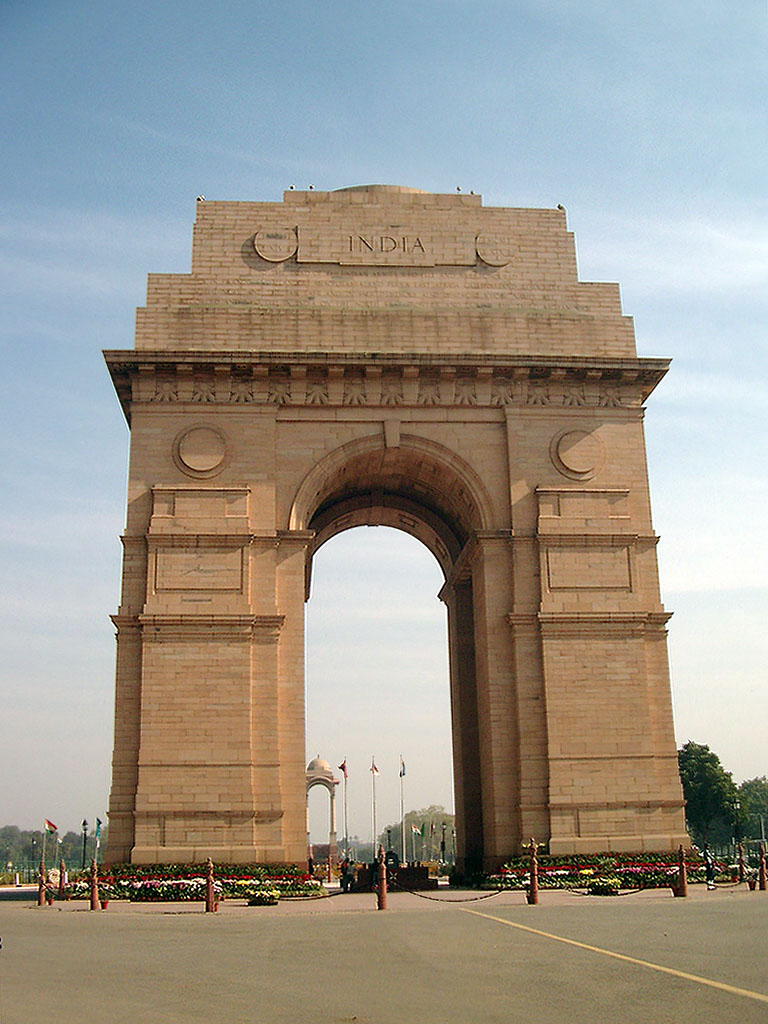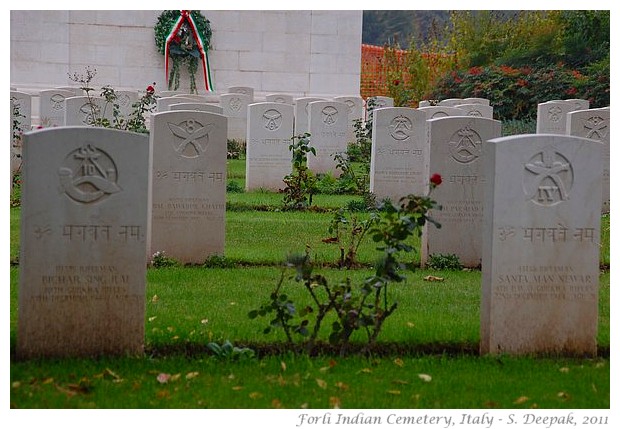An interesting indication of the degree of honesty and integrity of the British and Brtish controlled armies and their commanders as to whether they really controlled, checked or took measures against the atrocities carried out by their British troops in India: this is about the sack and rape of San Sebastian - a very European, and white resided town in 1813.
The Indian connection to this rape-raid is because of the whole campaign being formally under Wellesley-Wellington. Regarding the actual raid, the blogger quotes from the "Anglo-Irish" Napier - to discount criticism that otherwise it would be propaganda and victimhood.
http://thewildpeak.wordpress.com/2013/0 ... sebastian/
This storm seemed to be a signal of hell for the perpetration of villainy which would have shamed the most ferocious barbarians of antiquity. At Ciudad Rodrigo intoxication and plunder had been the principal object; at Badajoz lust and murder were joined in rapine and drunkenness; but at San Sebastian, the direct, the most revolting cruelty was added to the catalogue of crimes. One atrocity of which a girl of seventeen was the victim, staggers the mind by its enormous, incredible, indescribable barbarity. Some order was at first maintained, but the resolution of the troops to throw off discipline was quickly made manifest. A British staff-officer was pursued with a volley of small-arms and escaped with difficulty from men who mistook him for the provost-martial of the fifth division; a Portuguese adjutant, who endeavoured to prevent some atrocity, was put to death in the market place, not with sudden violence from a single ruffian, but deliberately by a number of English soldiers. Many officers exerted themselves to preserve order, many men were well conducted, but the rapine and violence commenced by villains soon spread, the camp-followers crowded into the place, and disorder continued until the flames following the steps of the plunderer put an end to this ferocity by destroying the whole town.
the ‘town council, cathedral chapter and inhabitants’ of San Sebastian compiled a report or ‘manifesto’ which they sent to the ‘Spanish nation’ describing what happened. Its full title is: Description of the atrocities committed by the Anglo-Portuguese troops in Saint Sebastian, 31 August 1813 and in the following days, exposed to the eyes of the Spanish nation by the municipality, chapter and inhabitants of the town. ( Tolosa 1813). They affirm: ‘We take it on our own head as to the exact truth of this relation that we present to you and that we have all signed.’ What follows is my inadequate verbatim translation of some extracts from this report. I have taken it from a book published in France in 1813 which contained a French translation of the Spanish report. I apologize if my rendition of a two hundred year old French version of a Spanish text has lost something in translation, but I think you will be able to get an idea of what happened to the people of this Basque town:
The town of San Sebastian had been set alight by the allied troops who had besieged it, after these troops had unleashed a horrible sack and its inhabitants had experienced a treatment such as one has not had any idea in civilized Europe…
… The patriotism of the loyal inhabitants of San Sebastian, for a long time suppressed by the severity of the enemy (the French), shone out in many ways, as did the joy and the affection with which the allies were welcomed; but these, insensible to this demonstration, as sincere as it was pathetic, responded to it by taking rifle shots at these same crossroads and balconies from where these felicitations came, and on which a large number of inhabitants perished, victims of the expression of their love of country, a terrible presage of what was to follow…
These horrors were only a prelude to many others, even the memory of which makes one quiver. Oh day forever unhappy; Oh cruel night!… At the extremity were found the enemy, cornered at the foot of the chateau, to save themselves from the unprecedented excess that the pen refuses to describe.
The pillage, the massacre, the rape were pushed to an unbelievable point; and what we discovered for the first time at the fall of night, after the retreat of the French into the Chateau, were limitless scenes of horror. From every quarter we heard the cries of distress of women who were being raped, without regard either to their tender youth or to their respectable age; wives outraged under the eyes of their husbands, girls dishonoured in the presence of their parents; one girl was the victim of the brutality of a soldier which happened on top of her mother’s dead body… Other crimes more horrible yet were committed on this day, and it’s only a sense of ‘modesty’ which prevents us naming them.
Throw a veil over this sad tableau, we’ll put our sights on another, no less deplorable: We have seen innocent victims having their throats cut…. even people of renown. Don Domingo de Govocehea, an old and respectable churchman, and a great many others, who we will not name, were murdered; the ill-fated Joseph de Larramaga was killed while trying to save the lives of a young girl, who had been raped, and her young son, by holding them in his arms.
A huge number of people were dying each day from the bad treatment that they had received. The citizens who were neither killed nor wounded were to suffer in a thousand ways; many of them stripped and left entirely naked.
… Pursued by the soldiers, they envied the fate of the people who had found a momentary asylum on the roofs or in the ‘pigsties’…
These excesses lasted several days after the affair, without anything being done to stop it… They appeared authorized by the commanders, since the goods stolen in the town were sold publically by the English and Portuguese in full view, and right next to, the military head-quarters.
When we thought the spoliation had finished, the allied troops found that the flames weren’t making enough progress; they fed them with a whole mixture of artefacts that they threw into the cauldrons, by which means they propagated the fire with frightening rapidity…
In this manner the town of San Sebastian perished.
Of the six hundred and some houses that were contained within the ramparts, there were only thirty-six left. It is remarkable that those saved were all adjoining the Chateau that the enemy occupied. The two parochial churches have also been conserved, as they served as quarters and hospitals for the victors. All the rest have been delivered to the flames… Fifteen hundred families were without bread and shelter eking out an existence worse than death.
Goods, furniture, merchandize, shops, boutiques, all had fallen prey to rapacity or incendiary… San Sebastian exists no more.
Oh unhappy town! Honour of Guipuscoa! You who had given such proof of constancy, who had regarded the English as liberators, could you believe that you would be destroyed by the same hands which should have broken your chains! To how many dangers were the inhabitants exposed during the five years that the French occupation had lasted!
When, on 25 July, we saw English and Portuguese prisoners arrive, we wanted to help them; the most delicate women ran to the hospital to lavish them with linen, food and care; the recompense for such fidelity has been the destruction of our town.
When the survivors came to survey what remained of their town, they found, as was reported,
only thirty-six houses and two churches left standing. The houses had been spared because they were being used by British and Portuguese officers when they were attempting to force the surrender of the French holed up in the Chateau – the French capitulated on 8 September. A census of inhabitants showed that before the siege there were about 5,500 people in the town, the massacre had reduced this to 2,600!
We often hear tell that Wellington was a great enforcer of order and military discipline and that he punished any pillaging in the most severe way. After San Sebastian, when his allied army was moving into France, he declared that he had not come to France to inflict pillage on the local people. Supposedly this was in reference to the pillaging and attacks of Spanish troops on the local French (Basque) population. He sent most, though not all, of the Spanish troops under his command back to Spain.
Wellington was not present at the fall and destruction of San Sebastian. The besieging army was under General Thomas Graham. But not only were no measures taken against the British and Portuguese troops who had run wild, but no mention was ever made of what happened in any official letters written by either Graham or Wellington. On 8 September, Graham wrote to Wellington: ‘My Lord, I have the satisfaction to report to your Lordship, that the castle of San Sebastian has surrendered.’ After giving more military details, he adds: ‘Thus, giving your Lordship another great result of the campaign, in the acquisition to the allied armies of this interesting point on the coast, and near the frontier.’ He also enclosed a copy of the terms of surrender agreed with the French.
Wellington sent the news to Lord Bathurst, the Secretary of State for War, on 11 September: ‘The town of San Sebastian was taken by storm on the 31st August, and the garrison capitulated in the castle on the 8th.’ No mention of any ‘atrocities’. But on the same day Wellington wrote to the Spanish General Freyre: ‘Sir, I shall be very much obliged to you if you will send the civil engineer of Biscay…. in regard to the repairs of the place of San Sebastian.’ He also requested that the civil magistrates sent masons, carpenters and ‘common labourers’ to ‘perform the works necessary’. He was no doubt fully aware of what had happened to the town.
There is in San Sebastian a memorial to the British liberators of the town in 1813. It is located on the slopes of Monte Orgullo (Urgull) and was unveiled by the Spanish Queen on 28th September 1924. The two inscriptions read, in both Spanish and English: ‘England has confided to us her Glorious Dead, Our Gratitude will Watch Over Their Eternal Repose’, and, ‘In memory of the Gallant British Soldiers who gave their lives for the greatness of their own country and for the Independence of Spain’.
Note that Wellesley had ran across much of central and south India just a couple of years before. He carefully however seems to have avoided taking action against his british soldiers raping and sadistically torturing white Europeans, and the atrocities do not find any mention in his dispatches. If they are state secrets to be preserved and/or destroyed in the national interest of UK - then also it shows what the British elite or state machinery usually hide and pretend about.
Is it that unlikely that he also turned a blind eye to his British soldiers' atrocities in India against people they were already starting to represent as racially inferior and that the many regional stories of horrendous atrocities committed by the Brits of EIC wars, right up to the possibly well-planned provocation and atrocities leading to 1857 war?
Note also that what distinguished the Brits in many of the continental wars, was the particular sadism of the troops - over and above the usual straightforward rape and massacre and loot, to which the Europeans were used to - to note specially as distinctively "cruel" behaviour.
Suddenly in case of India they all behaved professionally and saintly at the very same period?!!!

